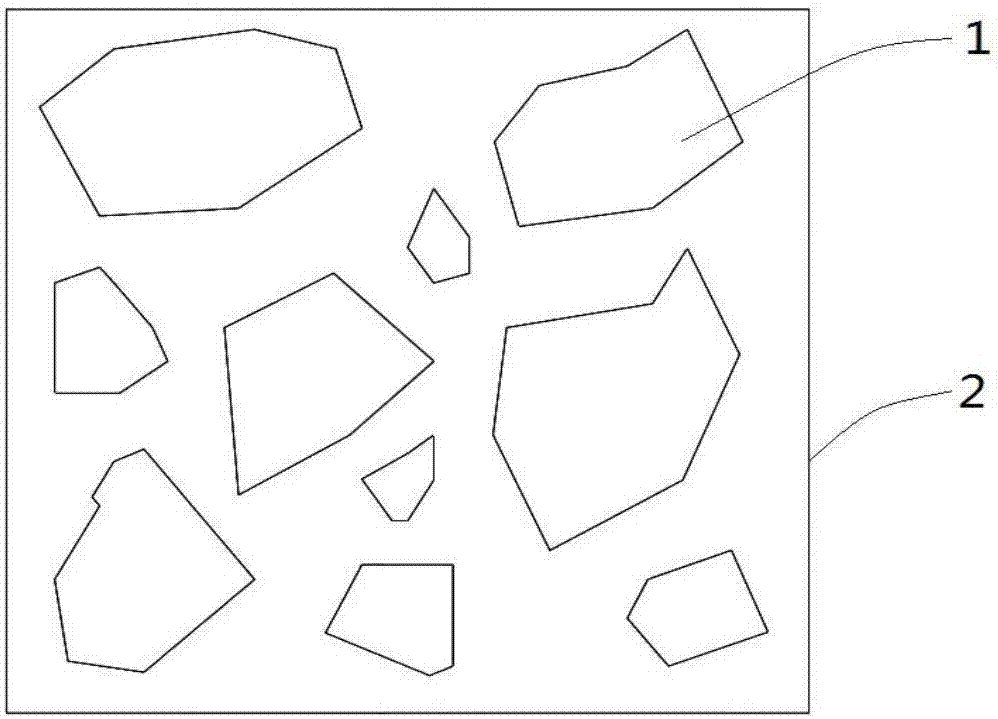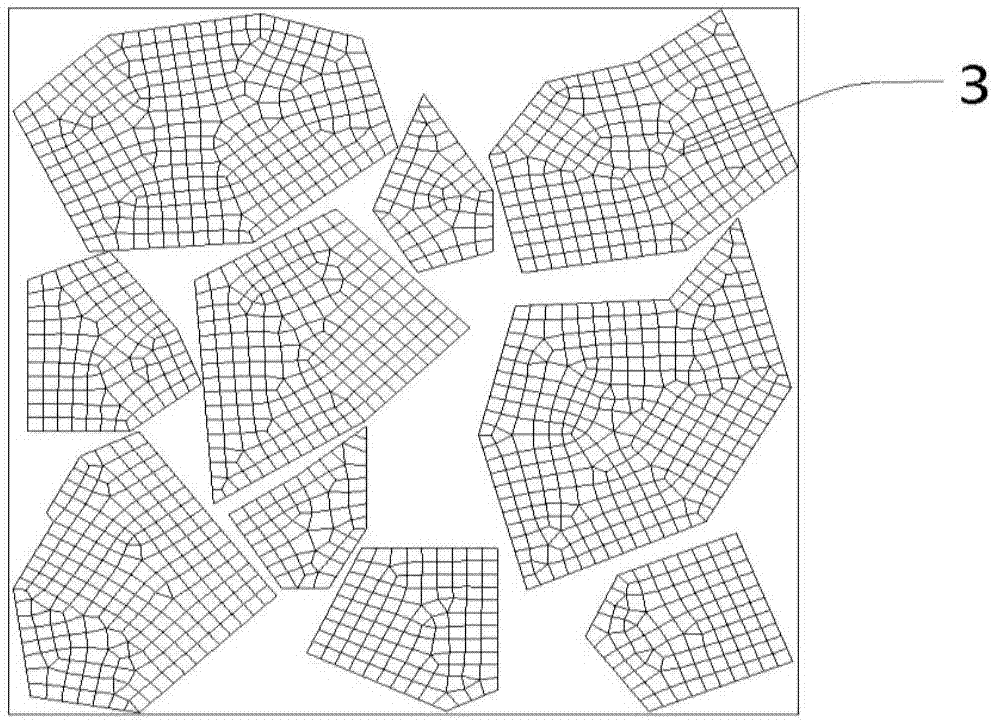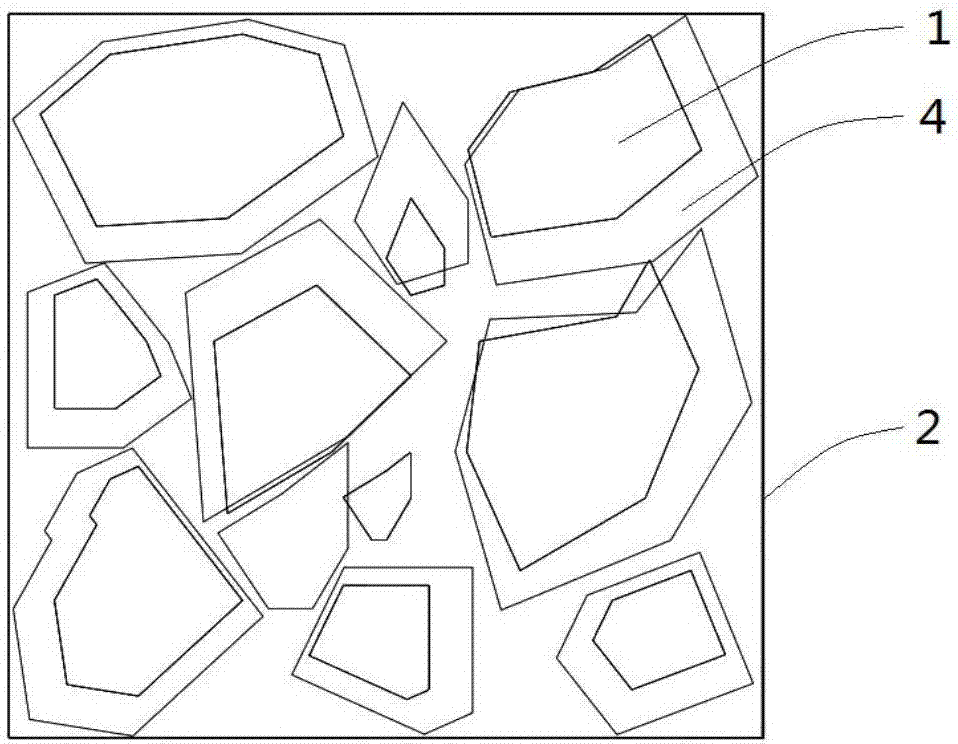Modeling method for high-compactness discrete particle heterogeneous system
A modeling method and discrete particle technology, applied in the field of computational materials science, can solve the problems of time-consuming calculation, high calculation cost, insufficient packing density of particle phase, etc., and achieve the effect of ensuring uniformity
- Summary
- Abstract
- Description
- Claims
- Application Information
AI Technical Summary
Problems solved by technology
Method used
Image
Examples
Embodiment 1
[0060] A modeling method for a high-density two-dimensional discrete particle multiphase system, comprising the following steps:
[0061] (1) Draw up the contour shape and size of the model, that is, determine the modeling space and its boundary, such as figure 1 The model boundary in , 2 is the model boundary;
[0062] (2) Generate a compact model of each particle according to the predetermined gradation, such as figure 1 The compaction model of each particle in , 1 is the compaction model of the particle;
[0063] (3) Divide the compact model of each particle into two-dimensional plane units, and assign thermoelastic material properties;
[0064] (4) Divide the model boundary into two-dimensional planar units, and assign rigid body material properties independent of temperature;
[0065] (5) Define the contact between particles and between particles and the model boundary as surface-surface contact, so that mutual penetration does not occur;
[0066] (6) In the modeling ...
Embodiment 2
[0080] A method for modeling the three-dimensional mesostructure of high-density particle-reinforced composite materials, comprising the following steps:
[0081] (1) Draw up the contour shape and size of the model, that is, determine the modeling space and its boundary;
[0082] (2) According to the predetermined gradation, the volume sum of the particles in each size range is drawn up, that is, the volume sum of the particle phases in the i~j size range is set as V (i-j) ;
[0083] (3) In the modeling space, randomly obtain several particle models in the size range of i×α~j×α, wherein, α=0.8, so that the volume sum of each particle model is V (i-j) ×β, each particle does not interfere with the surrounding particles, thus the compact model of each particle in the i~j size range is obtained;
[0084] The method for obtaining several particle models in the size range of i×α~j×α includes the following steps:
[0085] a. In the modeling space, randomly generate a point, and us...
PUM
 Login to View More
Login to View More Abstract
Description
Claims
Application Information
 Login to View More
Login to View More - R&D
- Intellectual Property
- Life Sciences
- Materials
- Tech Scout
- Unparalleled Data Quality
- Higher Quality Content
- 60% Fewer Hallucinations
Browse by: Latest US Patents, China's latest patents, Technical Efficacy Thesaurus, Application Domain, Technology Topic, Popular Technical Reports.
© 2025 PatSnap. All rights reserved.Legal|Privacy policy|Modern Slavery Act Transparency Statement|Sitemap|About US| Contact US: help@patsnap.com



